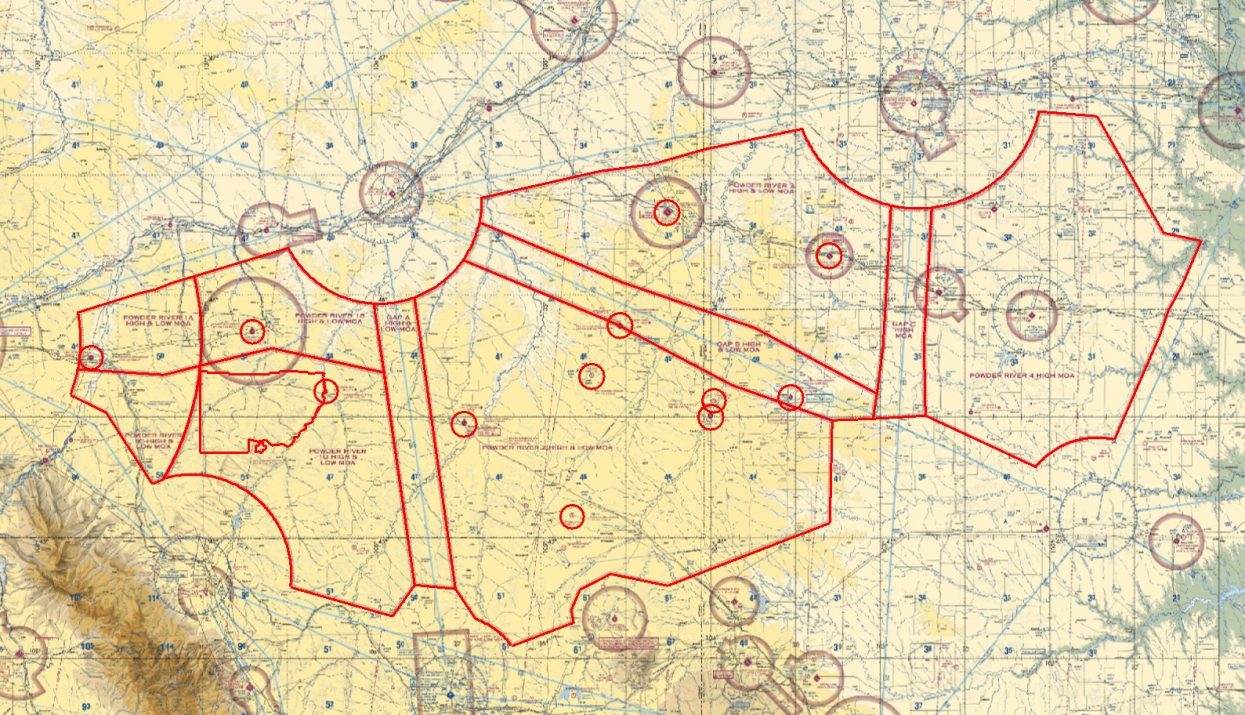
Feb. 14, 2018
Operators that regularly fly through the military’s Powder River Training Complex (PRTC) airspace – which covers large portions of Montana, North Dakota, South Dakota and Wyoming – are being asked to complete a survey by Feb. 24 to help NBAA and the Aircraft Owners and Pilots Association (AOPA) present operational feedback during a planned April meeting with government officials.
Nearly eight years in development, the PRTC was activated in September 2015 to provide a training area for U.S. Air Force B-1B and B-52 bomber crews operating from Ellsworth and Minot Air Force Bases.
“NBAA is proud to collaborate with AOPA to survey users of this large section of airspace before we meet with Department of Defense and state transportation officials. We want to look at how implementation of the PRTC is going, and see if any issues can be identified,” said Heidi Williams, NBAA’s director of air traffic services and infrastructure.
When the PRTC was established, NBAA Northwest Regional Representative Kristi Ivey conducted extensive outreach to NBAA members and other stakeholders in the affected areas and was able to present member concerns to the officials involved. The current PRTC survey will again provide NBAA staff with additional feedback that can be used to advocate for members.
“Essentially, we are looking for operators that routinely transit this area of the country to see if they are experiencing any challenges in accessing the airspace and, if so, at what altitudes,” Williams said. “We are looking for operational input, and the more detail users can provide, the better. If we determine from the survey results that operators are facing ongoing challenges, we want to be able to share these concerns with defense department and other government officials at our April meeting to help mitigate the issues.”
Originally proposed to encompass more than 28,000 square miles, the PRTC consolidated two large military operations areas (MOAs) and associated airspace into 18 MOAs, with three, eight-mile-wide corridors providing paths to separate training areas from civil traffic and lessen the impact on general aviation and airline operations.


 International Business Aviation Council Ltd.
International Business Aviation Council Ltd.